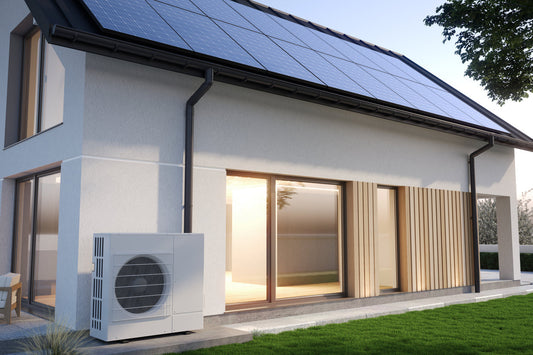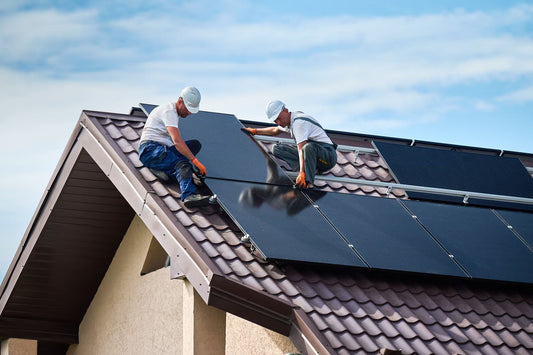Reduced feed-in tariffs for photovoltaic systems and rising costs for smart meters

The Bundestag has passed significant energy reforms that are scheduled to take effect in 2025. These reforms affect the feed-in tariff, the control and direct marketing of photovoltaic systems, and the costs of smart meters. In the future, there will no longer be a feed-in tariff for new solar systems if the electricity market price is negative. Furthermore, smart meters will become more expensive, both for mandatory installations and for voluntary installations. The mandatory control requirement will apply to smaller photovoltaic systems with a capacity of seven kilowatts or more. The SPD and the Greens have agreed with the CDU/CSU in the Bundestag on these important reforms, which aim to stabilize the power grid and avoid solar peaks. The adopted measures include, among other things, the mandatory remote control of smaller photovoltaic systems, a halt to feed-in tariffs during negative electricity prices, higher costs for the installation and operation of smart meters, and simplifications in the direct marketing of PV electricity. The legislative package still requires the approval of the Bundesrat before it can enter into force in 2025.
Control of small solar systems
In the future, even smaller solar systems with a capacity of seven kilowatts peak or more will be controllable in Germany. This is intended to prevent excessive electricity from private PV systems from being fed into the grid during peak times, thereby overloading the public power grid. If overload is imminent, grid operators will be able to throttle feed-in.
Exempt from this control requirement are PV systems that do not feed electricity into the grid, as well as private balcony power plants, i.e., plug-in solar devices. Furthermore, the feed-in capacity of new PV systems is limited to 60 percent as long as the operators' households are not equipped with a smart meter.
The reform package also regulates which households should receive priority for smart meter installation in the coming years. Prioritized households include those with high electricity consumption of more than 6,000 kilowatt hours annually and operators of PV systems with an installed capacity of over seven kilowatts.
Higher costs for smart meters
The smart meter rollout is to be implemented gradually throughout Germany over the next few years. A compromise between the Greens, the SPD, and the CDU/CSU stipulates that private households will have to pay more for the installation and operation of smart meters than originally planned. This applies both to households that voluntarily opt for a smart meter starting in 2025 and to those for which installation is mandatory: Households with an annual consumption between 6,000 and 10,000 kilowatt hours will pay an annual fee of €40 instead of €20 for meter operation.
The voluntary installation of a smart meter will also become more expensive. The cap on the one-time fee for early installation at the customer's request will increase from €30 to €100. In addition, the ongoing fee for voluntarily installed smart meters will rise from €20 to €30 annually. These increases are due to the increased installation and operating costs for the smart meter rollout.
If controllable consumption devices such as solar panels, wall boxes, or heat pumps are present in the household, or if the PV system has a capacity of more than 7 kilowatts, a control device at the grid connection is required in addition to the smart meter. In this case, the meter operator may charge a fee of up to €50 per year for the installation and operation of the control device in addition to the metering fee.
Change in feed-in tariff
If too much electricity from renewable energies is fed into the grid on sunny days, resulting in negative wholesale spot market prices, operators of newly installed PV systems will no longer receive government feed-in tariffs. Instead, they will be required to store the solar power they generate and consume it themselves. The non-compensated periods can be added to the end of the 20-year compensation period stipulated by the Renewable Energy Sources Act.
This measure is intended to prevent potential grid overloads and ease the burden on the federal budget, which finances the EEG subsidies. Apart from this change, operators of solar systems will continue to receive guaranteed remuneration rates for electricity fed into the grid. For PV systems with a capacity of up to 10 kilowatts peak that go into operation after February 1, 2025, the EEG remuneration for partial feed-in is 7.95 cents per kilowatt hour.
Direct marketing of PV electricity
An alternative to the guaranteed feed-in tariff is for PV system operators to sell their surplus electricity on the wholesale market through direct marketers. The approved reform is intended to facilitate the sale of solar power even for operators of smaller PV systems (under 100 kilowatts).
Operators of older PV systems with inverters that lack control systems will also be able to participate in direct marketing. The compromise temporarily suspended an originally planned direct marketing requirement for medium-sized solar systems with a capacity of 25 kilowatts or more.
Do you have questions or
do you need help?
Our team of experts is happy to process your inquiries or assist with any questions about our products.
5000+
Satisfied Customers
1500+
Projects Completed
+10 Years
Experience in Climate Technology





